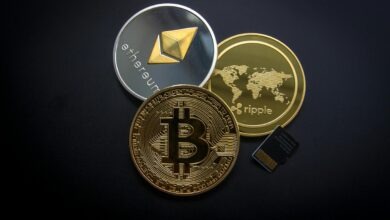
The Elements of Cryptocurrency Exchanges
By: Eric Milner
The virtual currencies in the global market grabbed the spotlight from the very first day. Everyone was confused but eager to know about this phenomenon. What was followed by several baseless assumptions and perceptions has now become the future of money? Every individual wants to have a crypto wallet when they get their national ID card and be part of this enormous decentralized marketplace.
Due to regulatory compliances introduced in banking and financial institutes, money launderers and scammers made several attempts to cleanse their funds. But the vital competitive elements and AI-driven verification solutions used by crypto exchanges reduce those possibilities to zero.
How to Get Verified and Registered at a Cryptocurrency Platform?
Like banks and other financial institutions, the virtual currency exchange performs complete AI-powered ID verification and AML checks. In addition, the digital verification solutions run the KYC (Know Your Customer) authentication procedure, ensuring the identity credentials of an individual with accuracy for fraud prevention and money laundering.
In the virtual currency exchange, the individual submits their ID documentation consisting of essential details: name, DOB, and location. For ID verification, different exchanges ask for additional identity documents. Most people prefer a passport to reduce the volume of concern or doubt, but a national ID or driving license can work.
The individual uploads a picture of them along with holding the national identity card and a consent note to avoid any complications or false claims in the future
To verify the address, the person can also submit bank statements but utility bills are mandatory. This can be a problem if the person is a paying guest somewhere or anyone else in the family takes care of finances.
After submitting documents and live selfies, in the KYC crypto, an OCR (Optical Character Recognition) screening takes place to examine all characters for forgery or editing. Finally, the solutions verify the ID and display results in moments.
Cryptocurrency Mining
It is defined as the process of getting cryptocurrency into the coin wallet by decoding complex mathematical conditions. When an individual contributes to a cryptocurrency, the subtle elements of the venture are entered on a distributed ledger, called the blockchain. But the method is complete only when a “miner” confirms the exchange as authorized. Once that’s done, the exchange is bolted into the blockchain for the entire network to see, and the exchange is complete. This confirmation handle requires mineworkers to unravel complex conditions. Every member or miner of the network tries to get an edge by resolving the problem. Those who do that, to begin with, are paid a division of the exchange as a charge for their expertise. Each effective exchange leads to new crypto coins entering into circulation.
Things that must be considered are that for bitcoin or any other cryptocurrency mining, the individual must possess a compatible system with excellent processing power and updated graphic cards just like those used for gaming purposes.
Cryptocurrency and Blockchain
Open Traceable Transaction
In a blockchain, tampering of data or security breaches is next to impossible as the entire network of the P2P marketplace is linked together; any unauthorized attempt or modification would be recognized instantly. For instance, a person trades something or makes a withdrawal from their cryptocurrency wallet, that particular transaction can be verified by the platform; instead of checking the bank records, they check with every single computer on this network to know whether the individual has enough and if the person does enough then each computer of the ledger or network makes the respective records updated so merely due to plenty of copies available of the ledger, any suspicious activity can get traced in a moment.
Layered Protection of the Investment
Furthermore, elaborating this, let’s suppose that if any peer of the chain tries to steal by hacking into someone’s network and adjusting the figures since the entire network is linked together and post every transaction or purchase, records are automatically modified. The attempt would create disruption. The crypto exchange will identify that one particular copy of the distributed ledger is not following up with the rest of the entire network.
Global Trading
It is to be believed that the massive trend and craze behind crypto, followed by a couple of years, will replace paper money. Other than the security and ultimate protection of cryptocurrency exchanges from illegitimate souls and scammers, the digital currency platforms enable or equip those individuals of underdeveloped countries to trade on a global level who don’t have access to traditional banks that require a lot of paperwork.
Cryptocurrency Exchanges Better than Banks
An individual does not need to wait for banks. However, the processing time of banks is ultrafast these days but still, crypto platforms not only make the transaction done in seconds, but a person does not need to worry about the exchange rates or interest. The processing fee is also almost nil, does apply for some specific coins.
Not only that, unlike banks, there is not any limit specified on transactions taking place at a single day or a specific interval of time.
Conclusion
Every potential investor must deposit their earnings into a KYC verified crypto exchange for the ultimate protection. A person can trade globally in seconds with zero possibility of fraud-free from the problems of exchange rates, spending limits, and interest. The distributive ledger updated after every transaction notifies every peer and concerning exchange about the current status of the register with great accuracy.






